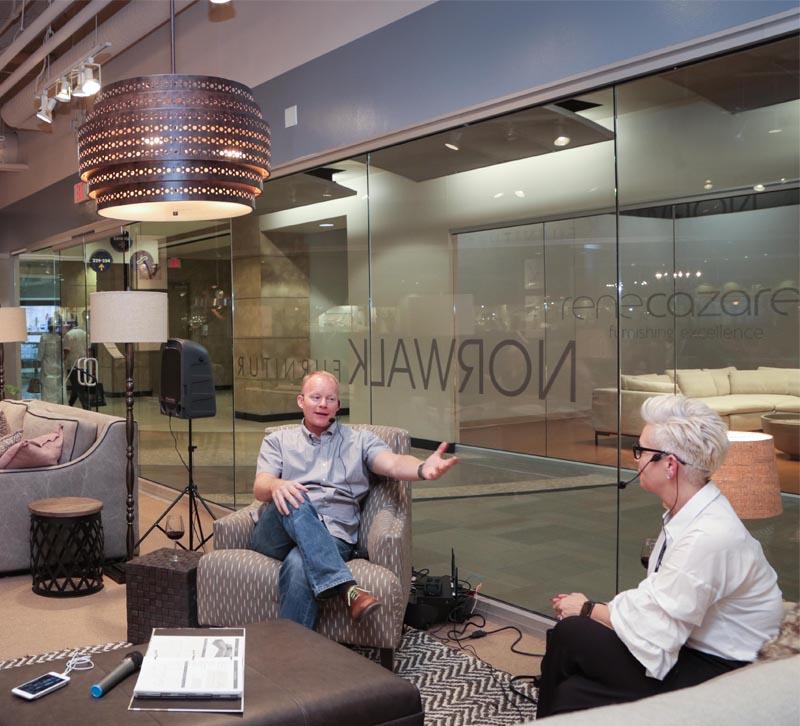Most retailers post regularly on social media. Few have blogs. Even fewer have their own podcasts. As a growing medium, podcasts can help you connect with younger listeners and position yourself as an expert. Starting a podcast is absolutely doable if you’re willing to put in the time — even if you have no experience. We spoke with experts to understand the basics of launching a podcast. Here are the key steps.
1. Pinpoint Your Audience and Topic
Before anything else, you need to decide on a precise topic for your podcast. When thinking of your focus, entrepreneur and podcaster John Lee Dumas says you should have an idea of your “avatar,” or your ideal listener. For example, the avatar for his podcast, Entrepreneur On Fire, is a 37-year-old man with a 25-minute daily commute to a job he hates. Having this listener in mind helps him create the perfect show catered to his or her needs and interests. Defining who exactly your audience is will inform the focus and structure of your podcast. James Swan, host of Million Dollar Decorating, says for retailers, that audience is built-in. Giving customers surveys or just chatting with them in your showroom is an easy way to find out more about their interests.
“Be creative and be inquisitive and find out from people what they struggle with,” Swan says, “because if you can find out your audience’s pain point — what is it that they struggle with the most — and then deliver a show filled with content that meets that need, you will have your audience.”
2. Get Your Equipment
You don’t need access to a recording booth to make a quality podcast. In fact, you really only need three basic tools: a computer, a USB microphone and editing and recording software. You can find quality mics for as little as $20. Dumas recommends the Logitech ClearChat to start with. For a middle-tier option, Nick May of The Chaise Lounge recommends the Blue Yeti. For software, podcasters of all stripes use Audacity, a free and user-friendly tool.
Once you have your equipment, make sure you have a quiet space to record in. An A/C vent that seems quiet to you now can sound like a bulldozer on tape.
3. Hit Record
When it comes to structure, all podcasts should start with a 10-30 second sign-on message where you introduce yourself as the host and what your podcast is about. Then, you have the meat of the podcast, which could be an interview or conversation, a how-to or anything else you have in mind. When recording, May emphasizes the importance of balancing education and entertainment.
“If I’m only going for laughs, there’s no substance there,” May says, “but on the other side, if I’m only trying to educate and teach, then it gets really dry and boring, and you’re not connecting with people on an emotional level.”
After the body, you’ll need to sign off, reminding your audience who you are, thanking them for listening and letting them know where they can find you online. This is your opportunity to give a call-to-action, plugging any products you mentioned or asking listeners to check out your business.
If you have a unique point of view to share, podcasting is an invaluable way to highlight your products and services and show off your expertise. Best of all, you’ll establish a trusting relationship with listeners, which can go a long way in promoting your business.
Podcasting Do's and Don'ts
There’s a lot of room for mistakes when making a podcast, especially if it’s your first time. Hiccups are to be expected, but here are some do’s and don’ts to keep in mind that will save you some grief.
Do avoid vocal tics. Hearing “um,” “uh” and “like” every other word will make your listeners cringe. Try recording yourself and listening to your speech patterns as practice, making an effort to cut out filler words.
Do stay in your lane. Choose a niche for your podcast and stick to it. Talking about irrelevant topics or bringing on guests from unrelated industries will confuse listeners.
Do be yourself. No matter what your voice sounds like, it’s important to let your personality and point of view shine. In audio format, authenticity is palpable.
Don’t make it all about you. Your podcast should center on whatever topic you’re covering or the guest you have on. That’s the meaty content that will keep your listeners coming back.
Don’t post irregularly. Whether it’s once a week or once a month, make sure to set a consistent schedule, communicate it to your listeners and stick to it.







